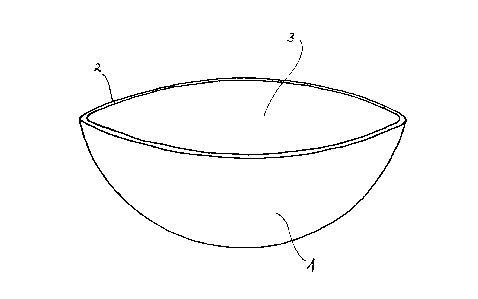Some of the information on this Web page has been provided by external sources. The Government of Canada is not responsible for the accuracy, reliability or currency of the information supplied by external sources. Users wishing to rely upon this information should consult directly with the source of the information. Content provided by external sources is not subject to official languages, privacy and accessibility requirements.
Any discrepancies in the text and image of the Claims and Abstract are due to differing posting times. Text of the Claims and Abstract are posted:
| (12) Patent Application: | (11) CA 2299213 |
|---|---|
| (54) English Title: | HARDENED GLASS OR GLASS-CERAMIC COOKING VESSEL FORMED AS A WOK, AND METHOD OF MAKING SAME |
| (54) French Title: | RECIPIENT DE CUISSON EN VERRE TREMPE OU EN VITROCERAMIQUE SOUS FORME DE WOK, ET METHODE DE FABRICATION DE CELUI-CI |
| Status: | Deemed Abandoned and Beyond the Period of Reinstatement - Pending Response to Notice of Disregarded Communication |
| (51) International Patent Classification (IPC): |
|
|---|---|
| (72) Inventors : |
|
| (73) Owners : |
|
| (71) Applicants : |
|
| (74) Agent: | MARKS & CLERK |
| (74) Associate agent: | |
| (45) Issued: | |
| (22) Filed Date: | 2000-02-16 |
| (41) Open to Public Inspection: | 2000-08-17 |
| Availability of licence: | N/A |
| Dedicated to the Public: | N/A |
| (25) Language of filing: | English |
| Patent Cooperation Treaty (PCT): | No |
|---|
| (30) Application Priority Data: | ||||||
|---|---|---|---|---|---|---|
|
The hardened borosilicate glass or glass-ceramic cooking vessel in the form
of a wok has a cooking surface that is easier to clean than prior art metal
woks.
Furthermore when it heated a better temperature distribution for cooking is
produced and it can be universally heated either by a radiantly heated body or
an
atmospheric gas burner. The method of making the wok starts with a glass blank
or piece of borosilicate glass, which is then heated until it softens and
shaped or
formed into the shape of the wok, optionally ceramicized and cooled to form
the
wok.
Note: Claims are shown in the official language in which they were submitted.
Note: Descriptions are shown in the official language in which they were submitted.

2024-08-01:As part of the Next Generation Patents (NGP) transition, the Canadian Patents Database (CPD) now contains a more detailed Event History, which replicates the Event Log of our new back-office solution.
Please note that "Inactive:" events refers to events no longer in use in our new back-office solution.
For a clearer understanding of the status of the application/patent presented on this page, the site Disclaimer , as well as the definitions for Patent , Event History , Maintenance Fee and Payment History should be consulted.
| Description | Date |
|---|---|
| Inactive: IPC from MCD | 2006-03-12 |
| Inactive: IPC from MCD | 2006-03-12 |
| Inactive: IPC from MCD | 2006-03-12 |
| Inactive: IPC from MCD | 2006-03-12 |
| Inactive: IPC from MCD | 2006-03-12 |
| Inactive: IPC from MCD | 2006-03-12 |
| Inactive: IPC from MCD | 2006-03-12 |
| Inactive: IPC from MCD | 2006-03-12 |
| Time Limit for Reversal Expired | 2005-02-16 |
| Application Not Reinstated by Deadline | 2005-02-16 |
| Deemed Abandoned - Failure to Respond to Maintenance Fee Notice | 2004-02-16 |
| Letter Sent | 2000-11-27 |
| Inactive: Single transfer | 2000-10-24 |
| Inactive: Filing certificate - No RFE (English) | 2000-08-25 |
| Inactive: Applicant deleted | 2000-08-25 |
| Application Published (Open to Public Inspection) | 2000-08-17 |
| Inactive: Cover page published | 2000-08-16 |
| Inactive: Filing certificate correction | 2000-06-12 |
| Inactive: First IPC assigned | 2000-05-01 |
| Inactive: IPC assigned | 2000-05-01 |
| Inactive: Courtesy letter - Evidence | 2000-03-28 |
| Inactive: Filing certificate - No RFE (English) | 2000-03-23 |
| Application Received - Regular National | 2000-03-16 |
| Abandonment Date | Reason | Reinstatement Date |
|---|---|---|
| 2004-02-16 |
The last payment was received on 2003-01-30
Note : If the full payment has not been received on or before the date indicated, a further fee may be required which may be one of the following
Patent fees are adjusted on the 1st of January every year. The amounts above are the current amounts if received by December 31 of the current year.
Please refer to the CIPO
Patent Fees
web page to see all current fee amounts.
| Fee Type | Anniversary Year | Due Date | Paid Date |
|---|---|---|---|
| Application fee - standard | 2000-02-16 | ||
| Registration of a document | 2000-10-24 | ||
| MF (application, 2nd anniv.) - standard | 02 | 2002-02-18 | 2002-01-17 |
| MF (application, 3rd anniv.) - standard | 03 | 2003-02-17 | 2003-01-30 |
Note: Records showing the ownership history in alphabetical order.
| Current Owners on Record |
|---|
| SCHOTT GLAS |
| Past Owners on Record |
|---|
| ERICH RODEK |
| EVELIN WEISS |
| HELGA GOTZ |
| HORST SCHILLERT |
| PATRIK SCHOBER |
| STEFAN HUBERT |